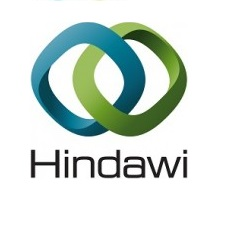| مشخصات مقاله | |
| انتشار | مقاله سال ۲۰۱۸ |
| تعداد صفحات مقاله انگلیسی | ۲۹ صفحه |
| هزینه | دانلود مقاله انگلیسی رایگان میباشد. |
| منتشر شده در | نشریه هینداوی |
| نوع مقاله | ISI |
| عنوان انگلیسی مقاله | Eosinophils from Physiology to Disease: A Comprehensive Review |
| ترجمه عنوان مقاله | ائوزینوفیل ها از فیزیولوژی تا بیماری |
| فرمت مقاله انگلیسی | |
| رشته های مرتبط | پزشکی |
| گرایش های مرتبط | فیزیولوژی |
| مجله | بیومید تحقیقات بین المللی – Bio Med Research International |
| دانشگاه | Universita Vita-Salute San Raffaele – Milan – Italy |
| کد محصول | E6135 |
| وضعیت ترجمه مقاله | ترجمه آماده این مقاله موجود نمیباشد. میتوانید از طریق دکمه پایین سفارش دهید. |
| دانلود رایگان مقاله | دانلود رایگان مقاله انگلیسی |
| سفارش ترجمه این مقاله | سفارش ترجمه این مقاله |
| بخشی از متن مقاله: |
| ۱٫ Introduction
۱٫۱٫ Definitions. Eosinophils represent up to 6% of the bone marrow resident nucleated cells and are routinely measured as part of the full blood cell count. When eosinophil absolute count exceeds 450–۵۰۰ cells/?l the term eosinophilia applies. A threshold of 1500 cells/?l is usually employed to define blood hypereosinophilia. The association of blood hypereosinophilia with established eosinophil-related organ damage, in the absence of other potential confounders, defines a hypereosinophilic syndrome (HES), whereas clinically silent cases are usually termed hypereosinophiliae of undetermined significance (HEUS). The term primary (or intrinsic) hypereosinophilia refers to the presence of an overt haematological malignancy or proliferative disorder characterised by neoplastic eosinophils as the cause of the disease. Secondary (or extrinsic) hypereosinophiliae comprise all cases in which eosinophil proliferation is stimulated by other (at least in part) known causes such as lymphoid malignancies, parasitic or inflammatory disorders. Idiopathic hypereosinophilia possibly constitutes a provisional category that includes all cases in which a clear underlying aetiology cannot be identified [1]. 1.2. Eosinophil Dynamics across the Human Body. Eosinophil development and maturation occur in the bone marrow over approximately a week under exposure of myeloid precursors to IL3, GM-CSF, and IL5. The latter is of particular relevance for the final stage of eosinophil differentiation and as a trigger to eosinophil migration into the circulating blood (Figure 1). Furthermore, IL-5 is a key cytokine in the survival and persistence of circulating and tissue eosinophils, preventing apoptosis and promoting cell activation. CD34+ progenitor cells, group 2 innate lymphoid cells (ILC-2), Th2 lymphocytes, invariant natural killer T cells, and mast cells are major sources of IL5 [2, 3]. In addition, IL5 can be released by eosinophils in an auto/paracrine manner [4–۷]. Chemokines such as CCL11, CCL24, and CCL26 (also known as eotaxin 1, 2, and 3, resp.) eventually promote eosinophils recruitment into tissues within 8–۱۲ hours since their release from the bone marrow [8]. The chemokine receptor CCR3 plays a crucial role to this purpose, since it binds to all three eotaxins as well as to other inflammatory stimuli such as CCL5, CCL7, and CCL13. |
